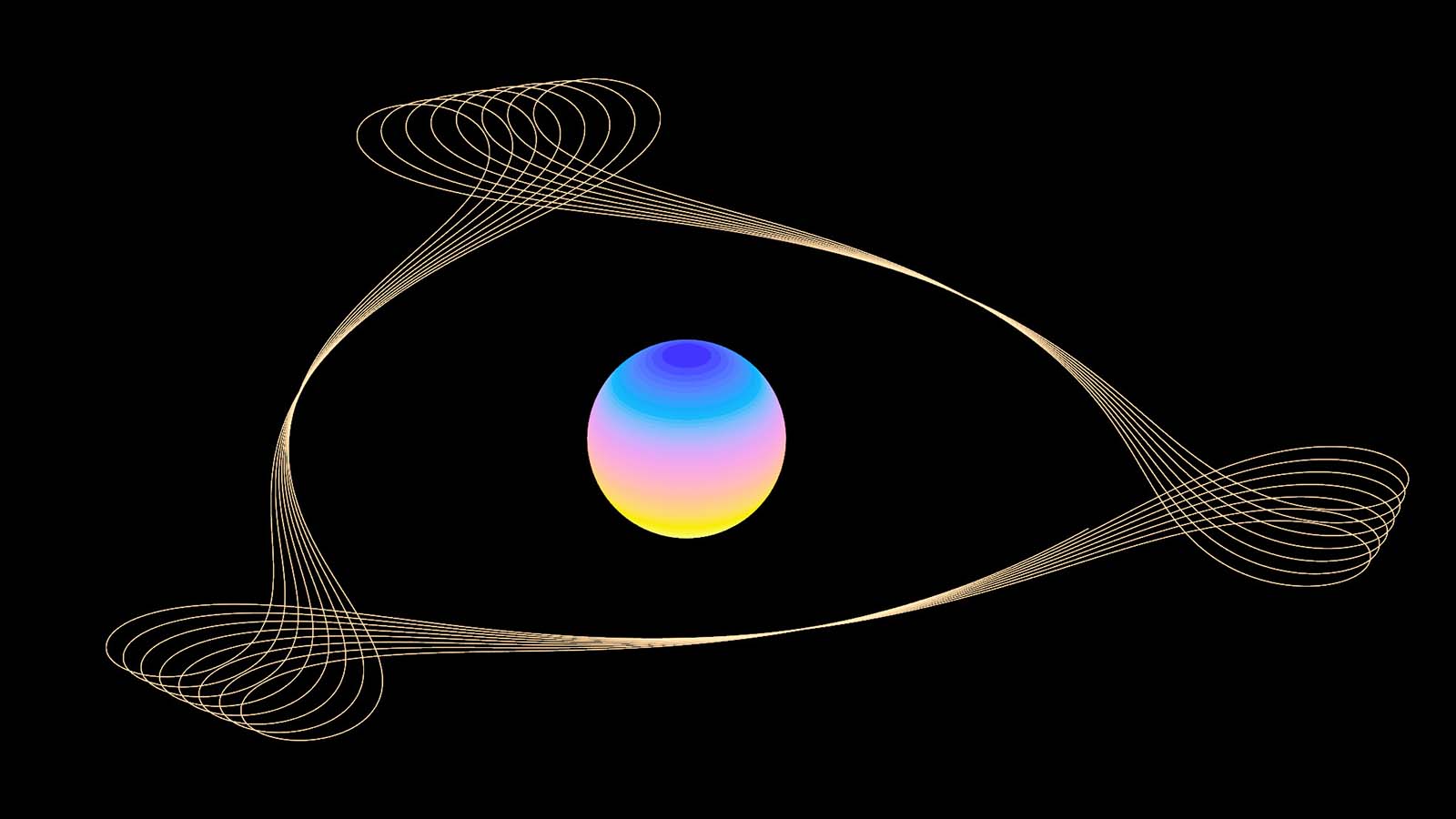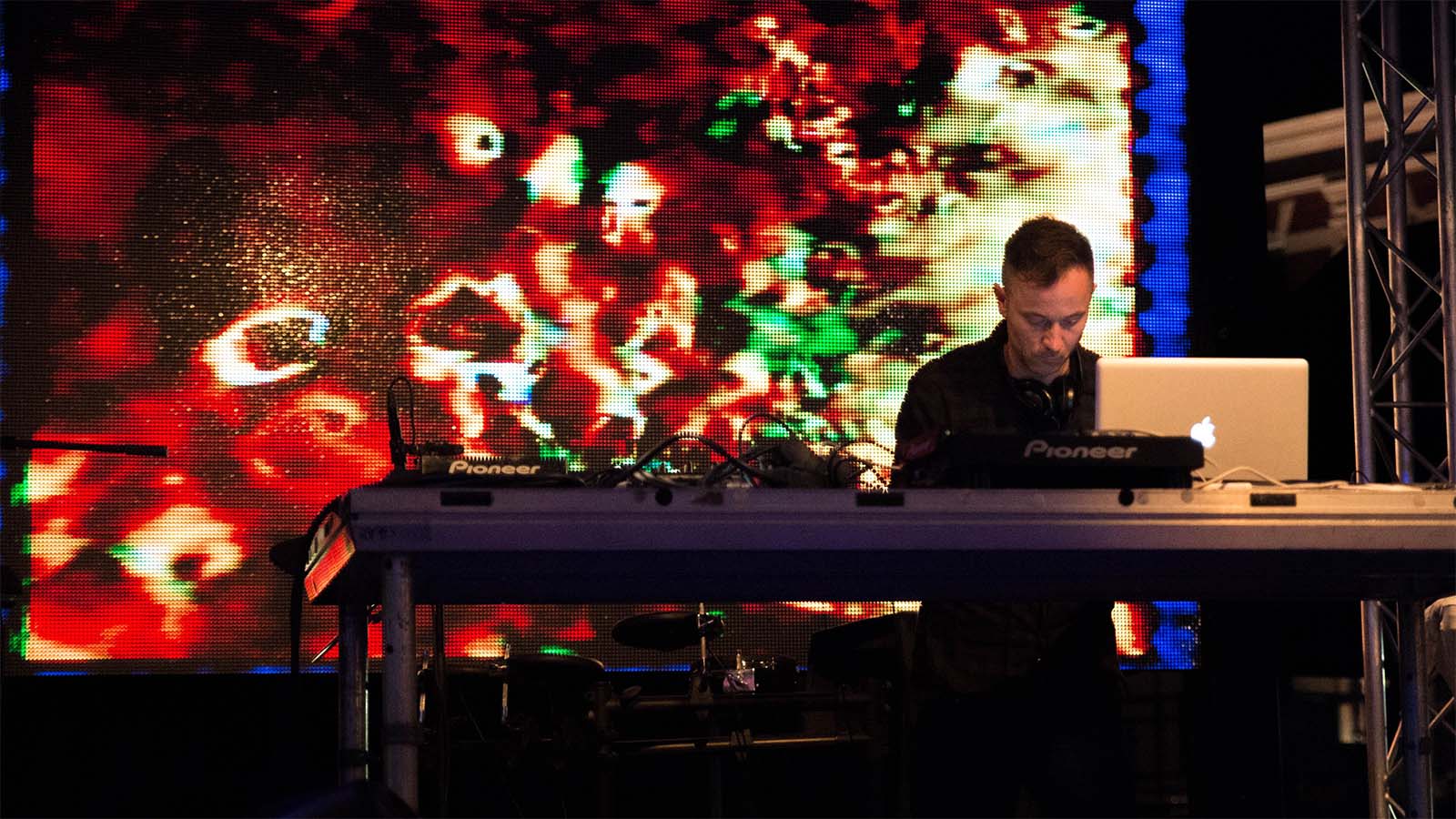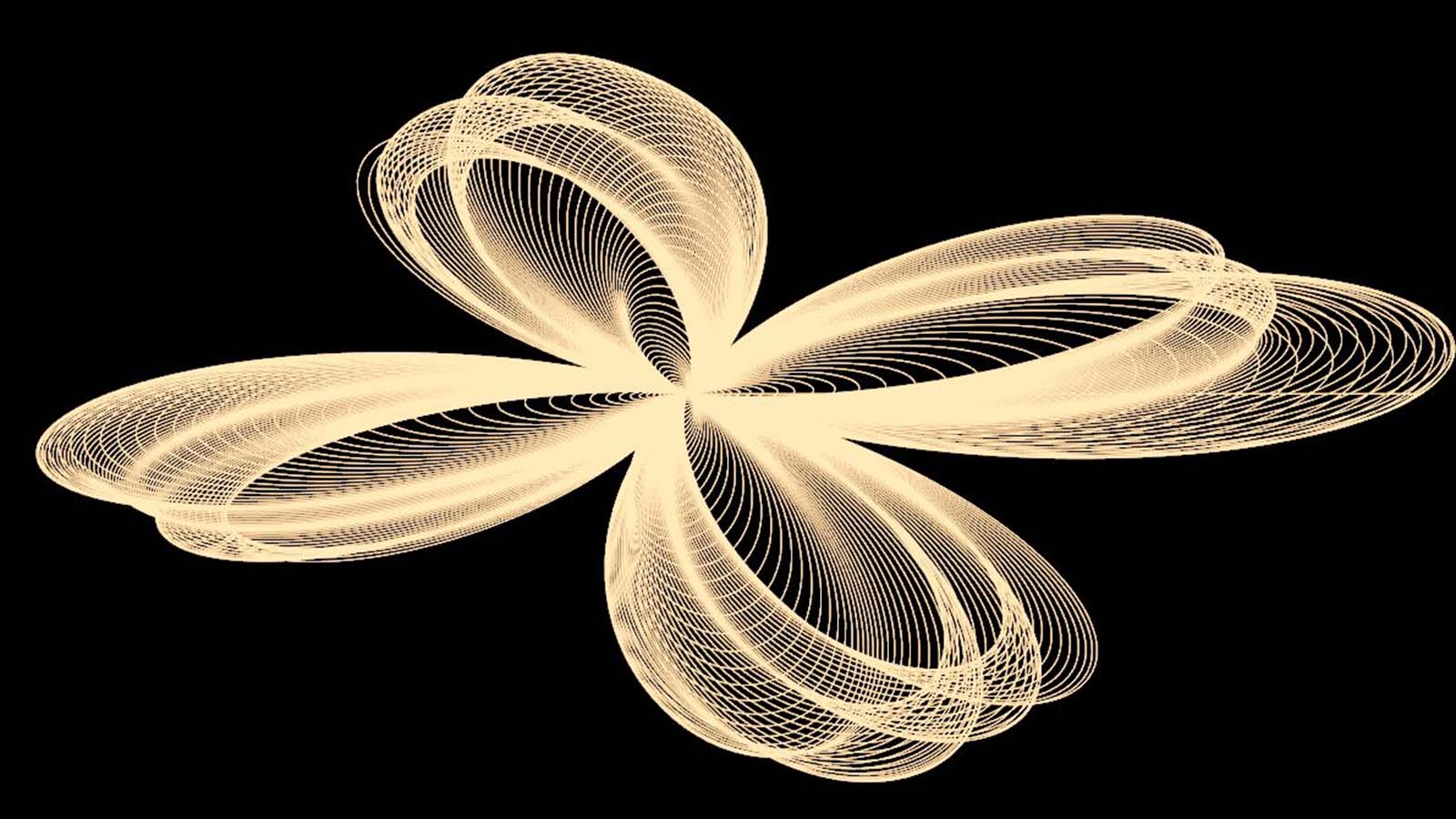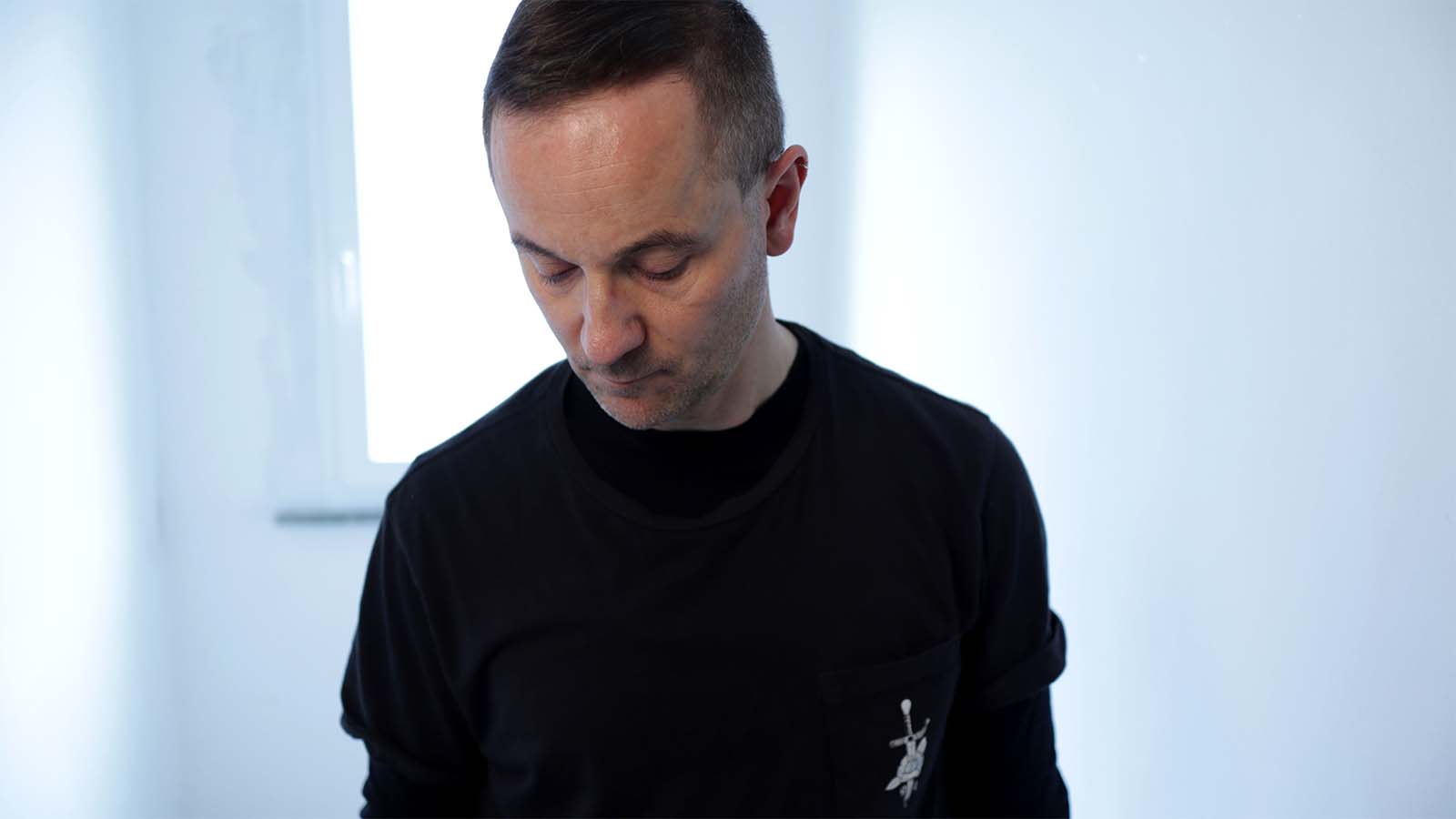How do you convey the yawning abyss of infinity that is a black hole to a person who hasn't immersed themselves in non-Euclidean geomet...
How do you convey the yawning abyss of infinity that is a black hole to a person who hasn't immersed themselves in non-Euclidean geometries with infinite dimensions, the 'math side' of superstring theory, and the century-long pursuit of a unified theory of physics?
If you're Dr. Valery Vermeulen, you mix it into an LP.
Mikromedas AdS/CFT 001, which is now available through Ash International, is the product of more than a year of production work. In a lot of ways, though, it's an electronic music album that has been in the making since Vermeulen was a teenager.
"Even at a young age, I was always interested in science and music," Vermeulen told me when we spoke a couple of weeks ago. "I started playing piano I think when I was seven years old. I also got into physics and science. I stumbled across quantum physics around 16. We had a library and I am a curious person."
That brush with quantum physics in a library started a decades-long fascination with quantum gravity, the elusive goal of physicists to bridge the gap between the two great theories of the universe: Einstein's General Relativity and Quantum Mechanics.
The best, and maybe only, hope to tie these two seemingly contradictory theories together runs right through the point in space where the two theories intersect behind a veil of darkness we can never peer behind: the singularity at the heart of a black hole.
Using streams of data from black hole mergers – simulations of particle behavior at the event horizon of a black hole – and the influence of Jazz legends like Oscar Peterson, Vermeulen attempts to sonify the unseeable interior of the most exotic object in the known universe.
The result is a sometimes haunting, always deeply fascinating seven-track album that aims to unify science and art as much as it does relativity and quantum mechanics.
A unified theory
Dr. Vermeulen pursued two separate tracks in his early life, studying for a Ph.D. in mathematics and performing as a street busker in Antwerp. "People sometimes ask me, 'Are you a scientist or an artist?', but I regard it all as creativity," Vermeulen said.
Living two seemingly separate lives had its challenges, though. "It was very difficult," he told me, "but I embrace it now. It took a long time to accept that these are both sides of who I am."
If only physics were that easy to bring together.
In the century-plus since Albert Einstein published his theory of general relativity in 1915, its predictions have been tested and verified more times than anyone has bothered to count.
But problems for relativity, and physics generally, began even before it was proposed. In 1900, Max Planck published a paper showing that light, under certain conditions, appeared to behave as if it was matter, and not a wave of energy as physics had long determined.
Things got curiouser and curiouser for physics in the 1920s as physicists like Niels Bohr and Werner Heisenberg delved deeper into the bizarro world of the subatomic.
Here, particles could be in multiple places at once. They could either be a particle or a wave – but not both – and which one it was depended on how the observer wanted to measure it.

Here, a famous cat could be both alive and dead at the same time. And two entangled particles could appear to communicate instantaneously across vast distances in defiance of Einstein's proof that the speed of light was the fastest anything could ever hope to move in the universe.
In the century since the foundation for quantum mechanics, it too has been tested and verified many times over. It has even been the basis of revolutionary technological innovations like lasers and quantum computers.
Above the atomic level, Einstein's general relativity theory reigns supreme, but it falls apart the moment you cross beneath atomic scales. Quantum mechanics, whose only governing law appears to be the laws of probability, stops abruptly at the edge of the atom.
That edge, so clearly defined, is maddeningly difficult to bridge. The search for a single theory that can encompass both, a theory of everything, is one of the great scientific challenges of the day. Everyone seems to agree that black holes may hold the key.
There, inside a black hole, the mass of billions upon billions of stars can occupy a single point in space of infinite density, smaller than any subatomic particle. But that mass exerts such incomparable gravity that light is as much a prisoner to it as the poor infalling star that is ripped apart like cosmic tissue paper.
There, relativity and quantum mechanics may be united as quantum gravity, if only we could see it – but a black hole keeps its secrets well.
Sonifying the abyss

It is the attempt to plumb the depths of that hidden space that inspired Vermeulen to compose his new album.
Vermeulen earned his Ph.D. in Mathematics in 2001, studying what he helpfully called "the mathematical part" of superstring theory. He has worked for years as a data scientist, but he has made some efforts previously to combine his two great passions, earning a Master's in Music Composition along the way.
"There was a former series," he said, "the sonification of a journey from the Earth to the center of the Milky Way. I was using a lot of sonified data streams in that first EP, but it was never released. But I wanted to take it a step further.
"Then I was like wait, maybe I can use deeper mathematical structures as a basis, which brought me back to one of my dreams, quantum gravity. Can I maybe work with that and combine it with music?"
When talking about the interior of a black hole where quantum gravity might reside, all one has to go on is math, the very theoretical, post-doctoral kind. Even the album title, Mikromedas AdS/CFT 001, takes as inspiration the wild, mind-bending idea that reality can be seen as a 3D projection of a 2D reality as it exists on a sphere an infinite distance away from us. At least, that's how Vermeulen described it to me. I don't know what any of that even means.
However, it's a fitting analogy. Using data pulled from gravitational waves produced by black hole mergers, black hole simulations, and other black hole data from universities in several countries, Vermeulen had a lot of numbers to work with, but how does one project those numbers into something you can hear?
"So the data I used, there are some data streams that I simulated myself, but I also got a lot of data from external sources like universities," he said. "I also worked with Thomas Hertog, a former collaborator with Stephen Hawking, and with Thomas I worked on gravitational waves, and there are a lot of gravitational waves in the album."
"They’re rather boring," he added. "You change the frequency and you get a whooping sound."
Musical, they are not.
"The solution I found was three-dimensional renderings of those gravitational waves," Vermeulen said.
In order to do that, he had to see the data differently, not as numbers on a line graph, but almost as if it was fluid. "The gravitational waves can be expressed in three dimensions as sums of spherical harmonics – basically they’re solutions to fluid equations.
"This gave me a lot more opportunities. Then I made two-dimensional cuttings of the three-dimensional fluctuating structures, and those are 2D evolving shapes, and those you can sonify and print to wavetable synthesis."
In addition to the black hole mergers, Vermeulen used simulations of the behavior of massive and massless particles at the event horizons of different black holes to translate the environment just at the event horizon into something you can hear.
Between all of these different data streams, Vermeulen was able to create a vast array of samples and instruments fed by these data streams, and from there, he could build the sonified black holes of the album.
Channeling infinity

"There’s two phases in the compositional process," Vermeulen explained.
"In the first phase, I’ll make a whole database of sonified samples. So, for example, with 1000 different simulations, I can make 1000 different sounds. And the other thing is to make instruments. Instruments are fed by data, or you can map knobs and controls to those instruments."
Using Ableton, Vermeulen was able to weave together the compositions using a combination of scientific data and his artistic sensibility.
"It’s an aesthetic, artistic decision in the second part that I make. I use this material, and then I try to get an abstract feeling, of course it’s also about emotions even if it’s abstract, and then I just make compositions. I make an arrangement and focus a lot on the sound design and mixing. I’ve been mixing for over a year on the album to get everything as I want it to sound."

The process of taking something as mathematically impenetrable as the interior of a black hole and making it accessible to our senses is an important part of the scientific process, Vermeulen believes.
"I’m interested in making connections between abstract geometrical, mathematical structures and sonification. Those objects are cold, dead objects. They’re not active, so I try to find a way to activate them, to make a link between geometry and sound using sonification.
"One of the things in my Ph.D., the geometries I was studying were infinite dimensional. I would love to make them tangible, to bring science closer to people, to let them see. Science is just an approach to look at reality, it’s not a replacement for reality."
While we might never "see" behind the veil of the event horizon of a black hole to discover its secrets, experiencing that mystery is important in itself. It is something that Vermeulen hopes to continue to explore in his work going forward. You can find more of his work on his artist website or on his Instagram.
from TechRadar - All the latest technology news https://ift.tt/3EC1PLT
via IFTTT








COMMENTS